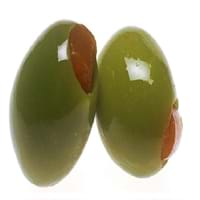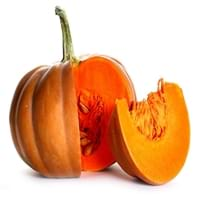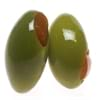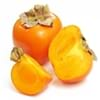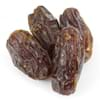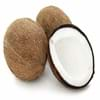Benefits
Health Benefits
Cancer prevention, Helps in cartilage regeneration, Prevents macular degeneration, Treatment of alzheimer's disease
Arthritis treatment, Cancer prevention, High Cholesterol Regulation, Lower blood pressure, Helps Prevent cataract, Prevents gall stones, Ulcer treatment, Weight loss properties
General Benefits
Anti oxidant properties, Anti-inflammatory properties, Boosts immune system, Controls blood pressure, Digestive aid, Maintains healthy cholesterol level
Boosts respiratory health, Eliminate parasites and infections, Protects against birth defects, Strengthens bones
Skin Benefits
Hydrates skin, Skin rejuvenation, Treatment of skin diseases
Heals sunburn, Hydrates skin, Skin rejuvenation
Hair Benefits
Acts as moisturizer, Good conditioner, Regulates hair growth
Regulates hair growth
Allergy
Allergy Symptoms
NA
Abdominal cramps, Anaphylaxis, Digestive Problems, Dizziness, Eczema, Fainting, Hives, Inflammation, Itching, Tingling sensation in wrist and face, Vomiting, Wheezing
Side Effects
Affects blood glucose levels, Dizziness, Stomach pain
Kidney and gallbladder diseases
Recommeded for
Pregnant Women
Yes
Yes
Lactating Women
Yes
Yes
Best Time to Eat
Hardly eaten raw, Olive oil is consumed for many purposes.
Along with meal, Don't eat after meal, Morning time (before lunch)
Nutrition
Serving Size
100 g
100 g
Carbs
3.84 g
99+
6.50 g
99+
Fiber
3.30 g
18
0.50 g
40
Sugar
0.54 g
99+
2.76 g
99+
Protein
1.03 g
24
1.00 g
25
Protein to Carb Ratio
0.26
3
0.15
11
Vitamins
Vitamin A (Retinol)
20.00 mcg
20
426.00 mcg
1
Vitamin B1 (Thiamin)
0.02 mg
37
0.05 mg
21
Vitamin B2 (Riboflavin)
0.01 mg
99+
0.11 mg
8
Vitamin B3 (Niacin)
0.24 mg
99+
0.60 mg
25
Vitamin B5 (Pantothenic Acid)
0.02 mg
99+
0.30 mg
13
Vitamin B6 (Pyridoxin)
0.03 mg
99+
0.06 mg
28
Vitamin B9 (Folic acid)
3.00 mcg
32
16.00 mcg
19
Vitamin C (Ascorbic Acid)
0.00 mg
99+
9.00 mg
99+
Vitamin E (Tocopherole)
3.81 mg
1
0.44 mg
20
Vitamin K (Phyllochinone)
1.40 mcg
28
1.10 mcg
29
Lycopene
0.00 mcg
9
0.00 mcg
9
Lutein+Zeaxanthin
510.00 mcg
2
0.00 mcg
36
Choline
14.20 mg
1
0.00 mg
32
Fat
15.32 g
2
0.10 g
99+
Minerals
Potassium
42.00 mg
99+
340.00 mg
14
Iron
0.49 mg
25
0.80 mg
16
Sodium
1,556.00 mg
1
1.00 mg
20
Calcium
52.00 mg
5
21.00 mg
21
Magnesium
11.00 mg
24
12.00 mg
23
Zinc
0.04 mg
29
0.32 mg
8
Phosphorus
4.00 mg
99+
44.00 mg
7
Manganese
0.00 mg
99+
0.13 mg
26
Copper
0.12 mg
16
0.00 mg
99+
Selenium
0.90 mcg
8
0.00 mcg
17
Fatty Acids
Omega 3s
92.00 mg
8
82.22 mg
10
Omega 6s
1,215.00 mg
2
49.00 mg
33
Sterol
Phytosterol
Not Available
0.00 mg
16
Water Content
75.28 g
99+
94.20 g
3
Ash
4.53 g
2
1.40 g
5
Calories
Serving Size
100 g
100 g
Calories in Fresh Fruit with Peel
115.00 kcal
5
26.00 kcal
38
Calories in Fresh Fruit without Peel
Not Available
30.00 kcal
23
Calories in Frozen Form
Not Available
Not Available
Calories in Dried Form
467.00 kcal
4
Not Available
Calories in Canned Form
119.00 kcal
4
34.00 kcal
24
Calories in Foods
Calories in Juice
60.00 kcal
22
46.00 kcal
32
Calories in Jam
200.00 kcal
26
130.00 kcal
35
Calories in Pie
240.00 kcal
38
244.00 kcal
37
Characteristics
Type
Tree fruit
Berry
Season
Spring, Summer
All seasons
Varieties
Manzanillo, Sevillano, Mission, Ascolano, Barouni, Gordal, Rubra and Picholine
Jarrahdale, Peanut, Lakota, Cow, Sugar, Caribean, Red kuri, Buttercup and Pink lady
Seedless Variety
No
Yes
Color
Black, Green, Purple, Yellow
Blue, Green, Orange, Red, White
Inside Color
Brown
Creamy Yellow
Shape
Oval
Round
Texture
Fleshy
Fibrous
Taste
Bitter
Creamy, Soft, Sweet
Origin
Eastern Mediterranean Region
Mexico
Grows on
Trees
Vines
Cultivation
Soil Type
Well-drained
Clay loam, Sandy loam, Well-drained
Soil pH
7-8
5.5-7.5
Climatic Conditions
Warm to hot climate
Warm to hot climate
Facts
Facts about
- In ancient Greece, 1st eye shadow was made by adding olive oil in ground charcoal.
- The most expensive form of olive oil is Extra Virgin.
- Largest type of olive tree is known as donkey tree & smallest one is called bullet.
- The name pumpkin has its roots in the Greek word ‘pepon’, meaning ‘large melon’.
- The largest pumpkin ever grown weighed 1,140 pounds.
- Pumpkins were once known for removing freckles & curing snake bites.
In Alcoholic Beverages
Wine
Yes
No
Beer
Yes
Yes
Spirits
Yes
Yes
Cocktails
Yes
Yes
Production
Top Producer
Spain
China
Other Countries
Algeria, Egypt, Greece, Italy, Morocco, Portugal, Syria, Tunisia, Turkey
Egypt, India, Indonesia, Iran, Italy, Mexico, Russia, Spain, United States of America
Top Importer
United States of America
United States of America
Top Exporter
Italy
China
Scientific Name
Botanical Name
Olea europaea
Cucurbita maxima
Synonym
Not Available
Cucurbita pepo, Squash
Classification
Domain
Eukarya
Eukarya
Kingdom
Plantae
Plantae
Subkingdom
Tracheobionta
Tracheobionta
Division
Magnoliophyta
Magnoliophyta
Class
Magnoliopsida
Magnoliopsida
Subclass
Rosidae
Dillenhidae
Order
Lamiales
Cucurbitales
Family
Oleaceae
Cucurbitaceae
Genus
Olea
Cucurbita
Species
O. europaea
Cucurbita mixta
Generic Group
Olive
Not Available
